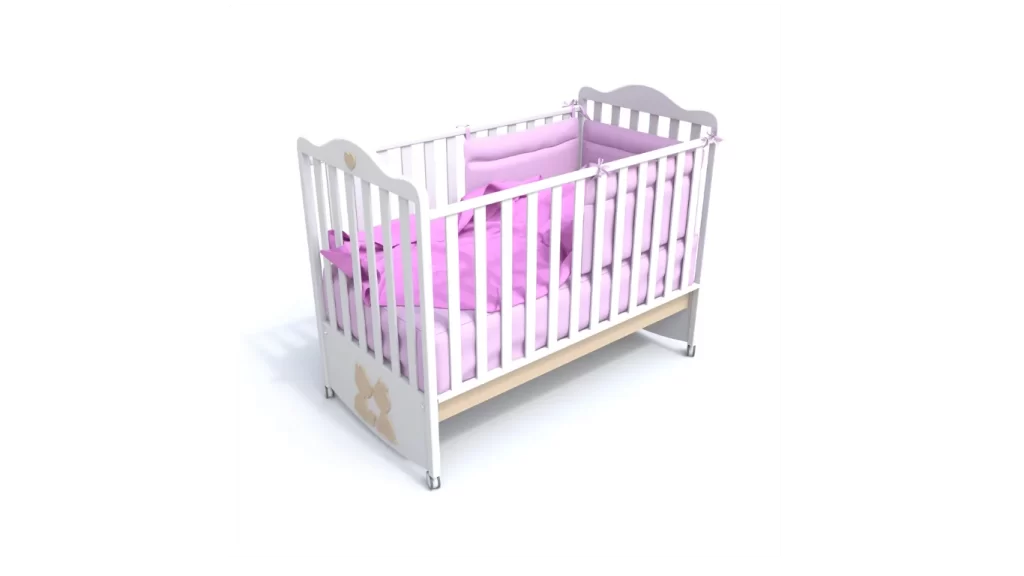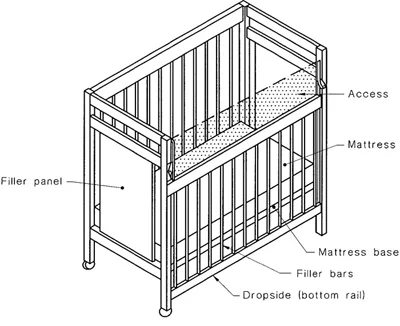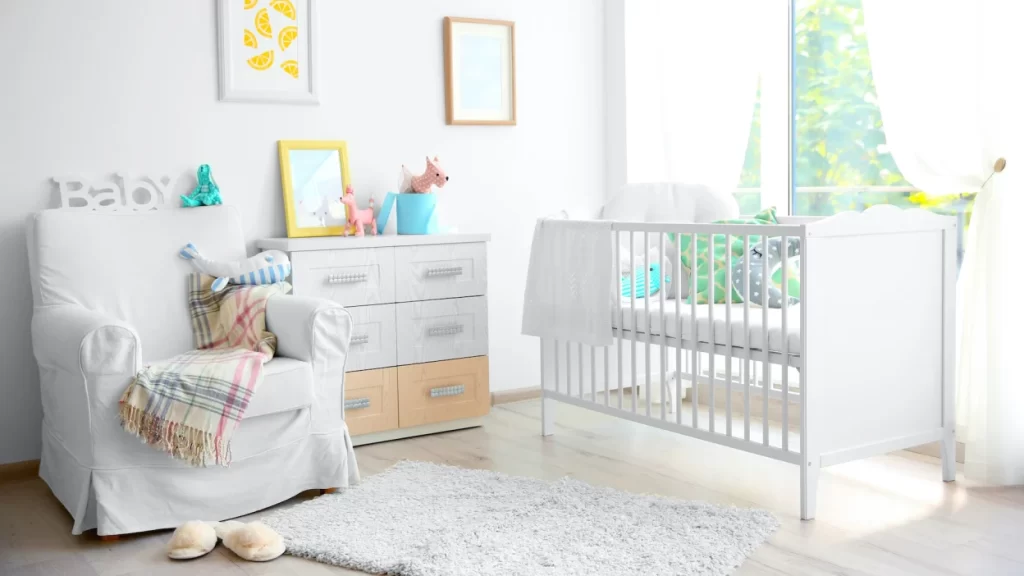In the realm of nursery furnishings, selecting the right size and type of bed for your baby is paramount, especially when space is at a premium. The small cot, a compact solution tailored for smaller spaces, has emerged as an essential item for modern parents.
Recognized for its versatility and space-saving design, the small cot, also referred to as a mini cot or slim cot, addresses the practical needs of urban living without compromising comfort or safety. Given the diverse range of options available, from compact cots in Australia to slim cots designed for tight spaces, finding the perfect fit can be a challenge. This highlights the importance of making an informed decision, one that balances size, functionality, and style.
This article aims to help guide parents through the maze of choices by providing expert reviews and insights on small cots. It will explore key considerations when choosing the right small cot for your nursery, including how to maximize the available space without sacrificing aesthetics or essential features.
From the best compact cot models on the market to advice on selecting a mini cot that offers the best in terms of design and utility, readers will be equipped with the knowledge needed to make a confident choice. Additionally, the article will offer tips on optimizing nursery space with a small cot, ensuring that even the coziest of rooms can be a comfortable, functional haven for your baby.
Choosing the Right Small Cot for Your Space

Importance of Size and Fit in Small Nurseries
When selecting a small cot, the dimensions are critical, especially in compact living spaces. Standard cots typically measure around 80cm in width and 140cm in length, but for smaller rooms, opting for a more compact design can significantly conserve valuable floor space. Compact cots, measuring 108cm by 53cm, are ideal for children up to 2 years and fit nicely next to an adult bed, making them a practical choice for smaller nurseries. Ensuring the cot fits the room not only optimizes space but also maintains comfort and functionality.
Adjustability and Growth with Your Child
A cot that grows with your child offers long-term value. Look for features like adjustable base heights, which allow the mattress to be lowered as your child grows and becomes more mobile, enhancing safety. Convertible cots are particularly beneficial; they can transform from a bassinet to a toddler bed, adapting to your child’s developmental stages. This adjustability ensures the cot remains helpful beyond the infant years, providing a safe sleeping environment as they grow.
Design and Aesthetics
The material and design of a small cot are not just about aesthetics but also about safety and durability. Opting for cots made from high-quality materials like beechwood or pine ensures durability and safety. Avoid low-quality materials like MDF, which may not withstand regular use. Additionally, the design should complement the nursery’s décor while meeting strict safety standards, such as the Australian AS/NZS 2172-2003 standard. For those who value aesthetics alongside functionality, cots like the Fuori Cot and the Hygge Cot offer stylish options with their minimalist Scandinavian designs.
Related: Check out our top picks for baby cots here.
Key Features to Look for in a Small Cot

Safety Standards and Certifications
When selecting a small cot, it is crucial to make sure that it meets the mandatory safety standards which prescribe requirements for design, construction, labelling, and testing. Cots must comply with standards such as the Australian and New Zealand Standards for Cots (AS/NZS 2172:2003) to ensure they are safe for use. All cots, including those sold second-hand, must meet these standards, and it is advised to look for the label confirming compliance. Additionally, the Australian standard AS/NZS 2172:2013 is the most recent standard that cots must adhere to, ensuring the product’s safety and functionality.
Ease of Assembly and Mobility
A key feature to consider in small cots is the ease of assembly. Many cots come flat-packed and include an assembly guide and kit, making the setup process straightforward and stress-free. Furthermore, compact cots often feature wheels for easy mobility, allowing them to be moved throughout the home as needed. These wheels are typically lockable to ensure the cot remains stationary when required.
Available Accessories and Add-Ons
When purchasing a small cot, consider the available accessories that can enhance its practicality and safety. Look for options that include adjustable bed rails and those that comply with safety standards. Additionally, brands like Cocoonababy and Leander offer high-quality cot accessories, such as bumpers and canopies, which are designed to be safe and complement the cot. Ensure any accessories chosen also meet safety standards to maintain the cot’s compliance.
Top Small Cot Models on the Market
Comparison of Popular Brands and Models

Our range of compact cots is designed to fit perfectly in small nurseries. They feature high-quality natural timber construction compatible with a variety of cot mattresses. Tasman Eco offers compact baby cots that are easy to transition around the house and fit through standard-sized doors. They are designed to grow with your baby with changeable base heights. Additionally, Baby Village provides a selection of smaller cots that do not compromise on style or functionality, including brands like Boori Boori and Leander, which offer models in multiple colours and sizes.
Price Range and Where to Buy
The price range for small cots varies depending on the model and features. Basic models start from as low as $295.99 for the Grotime Dainty Cot, while more premium options like the Leander Classic Cot can go up to $1899.99. These cots are available for purchase at significant baby furniture retailers and can also be found online, providing convenience for parents looking to buy the perfect cot for their nursery.
Pros and Cons Based on User Reviews
Users have praised the Tasman Eco Mosman Compact Cot for its affordability and practical design, priced at $369.99. However, some users have noted that while the Leander cots are stylish and can transform into a junior bed, they are priced on the higher end and require custom sheets, which can add to the overall cost. Despite the higher price, many parents find the investment worthwhile due to the cot’s durability and the ability to grow with the child.
Maximizing Nursery Space with a Small Cot

Space-saving Tips and Layout Ideas
When designing a nursery in a small space, consider innovative solutions such as transforming a closet into a cozy sleep area, which not only saves space but also keeps the nursery integrated within the home. Utilizing dual-purpose furniture is highly effective; for instance, a dresser can serve both as a changing table and storage unit, reducing the need for multiple pieces. Additionally, strategically placing a dresser inside the closet can free up valuable floor space for other essential activities like playing and reading.
Complementary Furniture and Decor
Selecting the right furniture and decor can enhance the functionality and aesthetic of a compact nursery. The Eden Compact Cot, available in white and ash, offers a stylish yet practical solution, fitting seamlessly into small spaces while providing essential sleeping arrangements. Complementing the cot with soft pastel palettes and engaging artwork can create a welcoming environment for your baby. Moreover, adding a compact armchair instead of a larger rocking chair can provide comfort without overcrowding the space.
Creative Storage Solutions
Practical storage solutions are crucial in maximizing nursery space. Utilizing under-crib areas with storage baskets can help keep all the baby essentials organized and out of sight, making the nursery look tidy and spacious. Open shelving units offer a versatile storage solution, ideal for displaying decorative items while keeping daily necessities within reach. For those looking to DIY, consider custom shelving or under-bed storage hacks to tailor the storage to your specific needs and the dimensions of the nursery.
Conclusion
Throughout this guide, we’ve navigated the terrain of selecting the perfect small cot for your nursery, emphasizing how vital it is to balance form, function, and safety in compact living spaces. Highlighting the importance of size, adjustability, and compliance with safety standards, we’ve underscored that choosing the right small cot can significantly enhance both the aesthetics and practicality of your nursery. By considering these key factors, parents can make an informed decision that ensures their baby’s comfort and safety while making the most of limited space.
Reflecting on the broader implications, it’s clear that the decision extends beyond mere furniture selection—it’s about creating a nurturing environment for your child to grow and thrive in. Equipped with the insights from this article, parents are better positioned to choose a cot that not only meets their immediate needs but also adapts to the evolving demands of their growing child. This thoughtful approach to selecting a small cot contributes to a well-organized and loving nursery, setting the stage for many cherished moments and milestones to come.
FAQs
What are the benefits of using a mini cot?
Mini cots are excellent for parents who need to save space or want to keep their baby close by. They are particularly useful for those who travel often or require a temporary sleeping arrangement for their baby.
What is another name for a small cot?
Small cots are commonly referred to as “mini cribs.” This term encompasses all smaller-than-standard cots, including travel cribs and many play yards. Typically, it refers to small baby beds that have hard sides.
How does a compact cot differ from a regular cot?
Compact cots are designed to be shorter and narrower than traditional cots, measuring 108cm in length and 53cm in width. They are suited for children up to 2 years old and are perfect for smaller spaces or for being placed next to an adult bed.
Is it safe for babies to use mini cots?
Yes, mini cots are safe for babies. Although they are about 14 inches shorter than standard cribs, they provide a suitable and secure sleeping area. Room-sharing with your baby, facilitated by a mini cot, offers several benefits.





